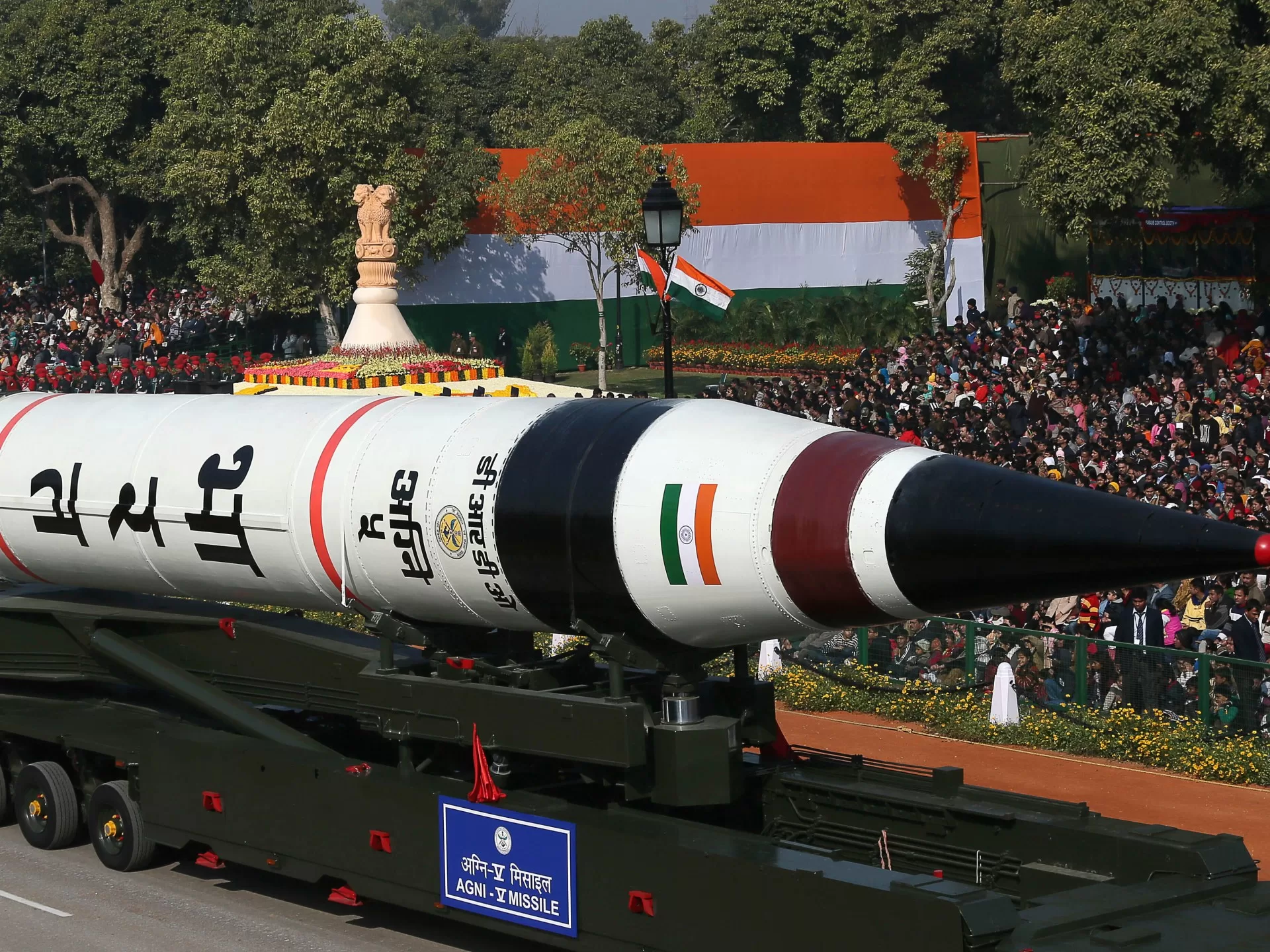Delhi has been developing its missile systems for years now, especially as its competition with China grows.
It is the latest development in India’s nuclear-capable Agni missile series, named after the Sanskrit word for “fire”, and part of a project launched in 1983.
The technology delivers multiple warheads to different targets fired from the same missile on the Agni-V platform, which has a range of 5,000 km (3,100 miles), making it India’s sole contender for intercontinental ballistic missile (ICBM) long-range category.
Modi said on Monday that he was “proud” that the launch of “the first flight test of indigenously developed Agni-5 missile with Multiple Independently Targetable Re-entry Vehicle (MIRV) technology”, in comments on social media platform X.
Minister of Defence Rajnath Singh said on X that India had “joined the select group of nations” capable of the missile technology.
The United States, United Kingdom, France, China and Russia are among the countries that already use MIRV missiles, while Pakistan tested the technology in 2017, according to Washington-based non-profit advocacy group, the Center for Arms Control and Non-Proliferation.
The Indian missile was developed by the country’s military research arm, the Defence Research and Development Organisation.
Delhi has been developing its medium and long-range missile systems since the 1990s, especially as its competition with China grows.
In 2021, India successfully tested Agni-V, a nuclear-capable intercontinental ballistic missile that is believed to be able to target nearly all of China. India is also capable of striking anywhere in neighbouring Pakistan, its archrival with which it has fought three wars since the two countries gained independence from British colonialists in 1947.
In recent years, India has deepened its defence cooperation with Western countries, including in the Quad alliance with the US, Japan and Australia.
